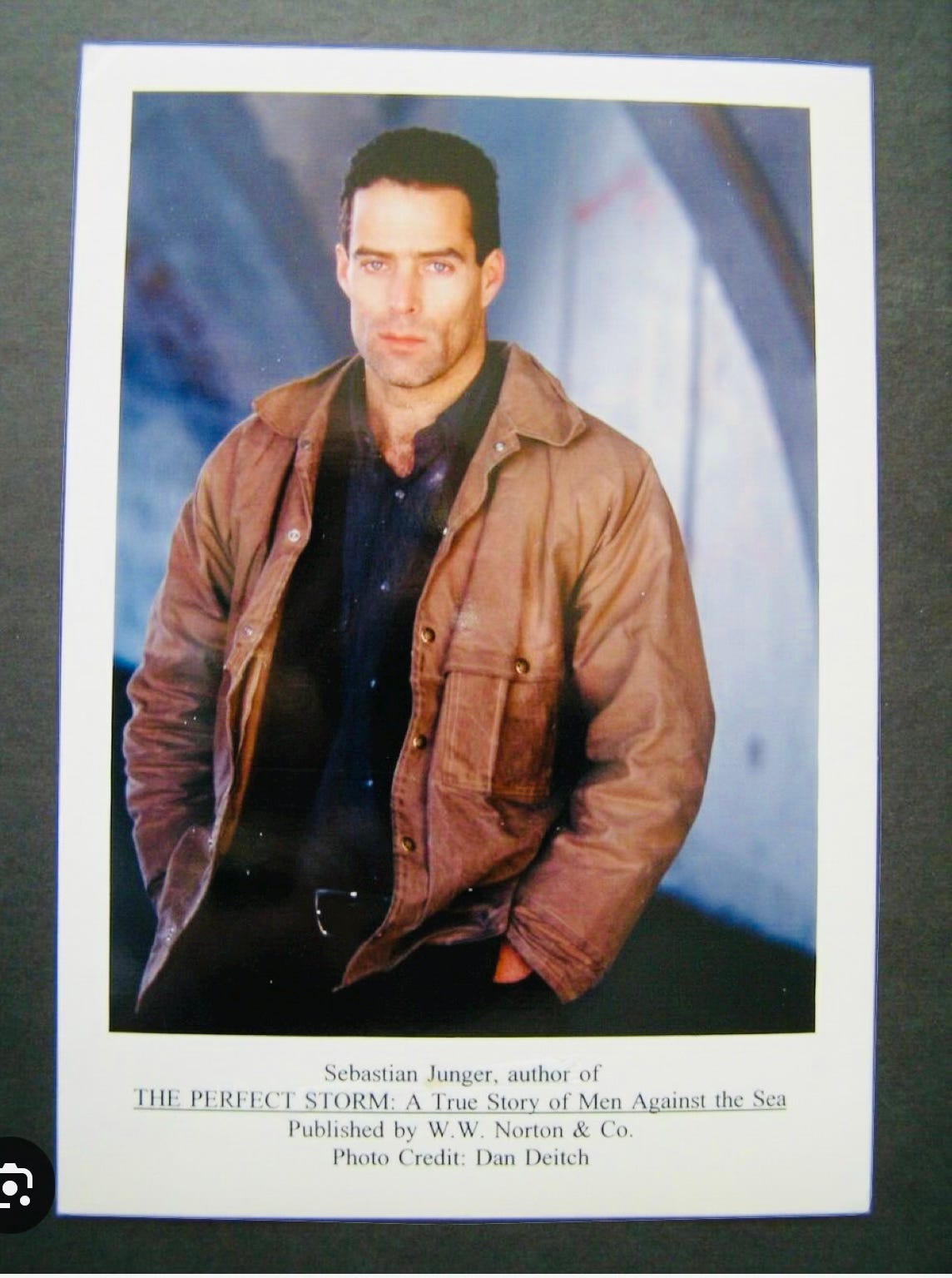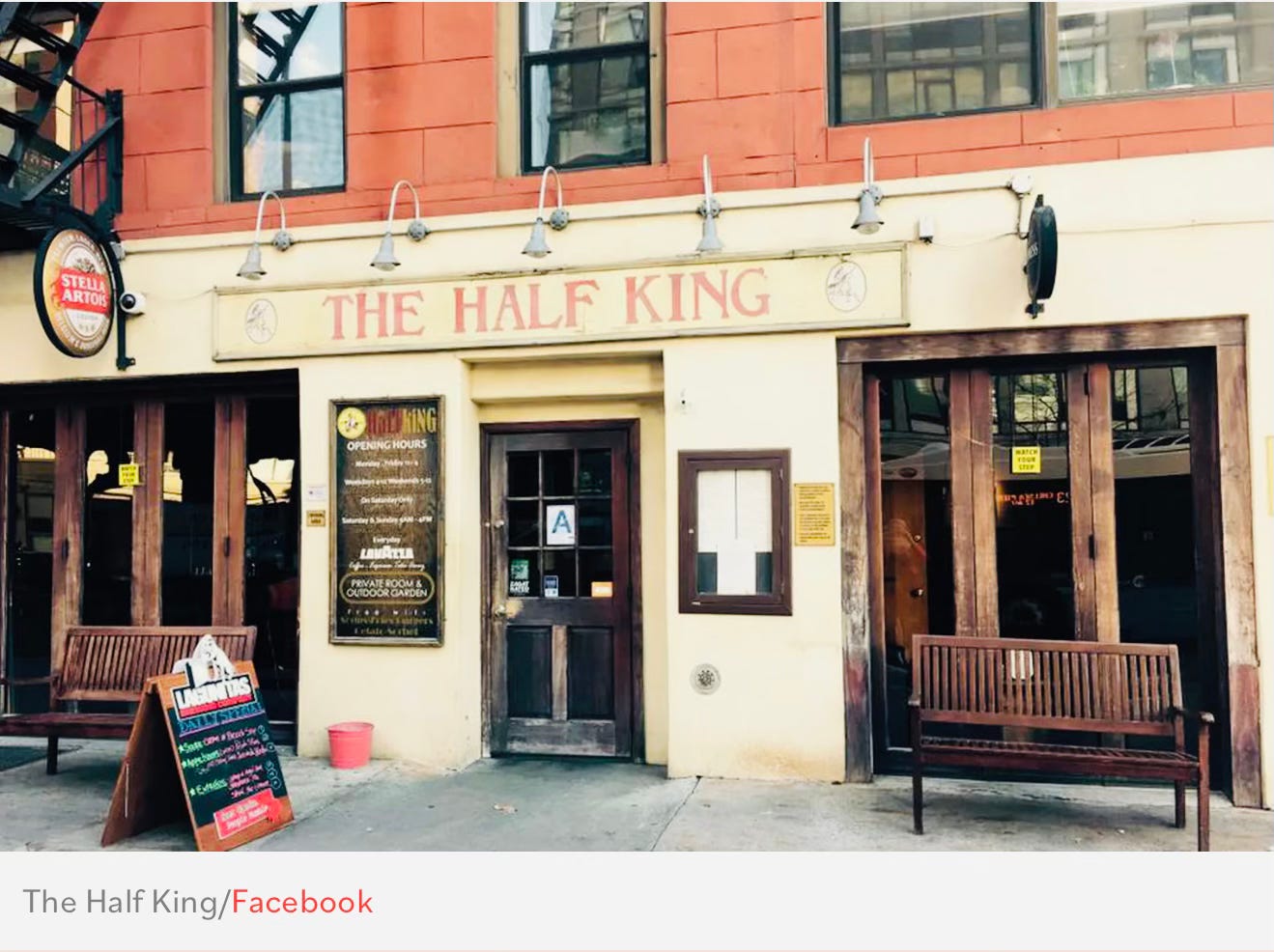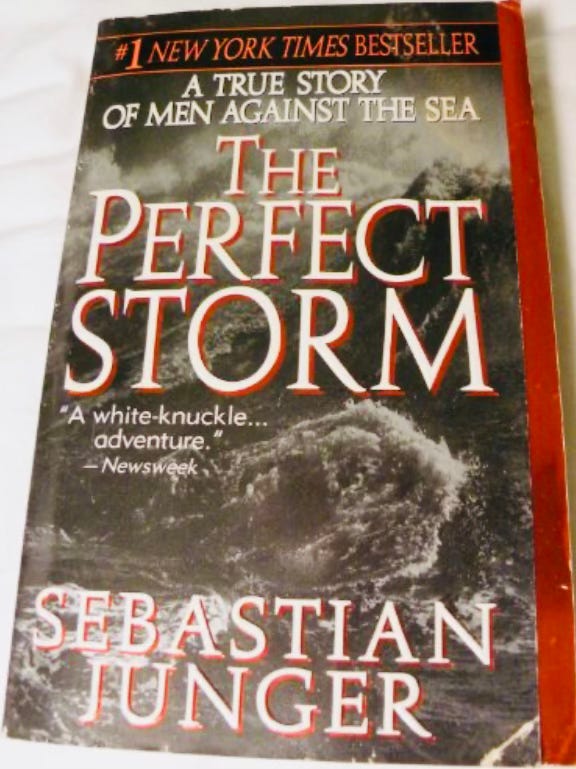Shipwrecked with Sebastian Junger
And how I survived.
Welcome to my late 90’s life, when I worked for Ron Galotti and Anna Wintour at Vogue.
If you are a new subscriber (and thank you for that!), you can catch up below on the first five chapters of Core Curriculum: Everything You Need to Know I Learned at Vogue.
Mr. Big, “boa wearers,” and my epic Vogue makeover.
If you are just joining, during my time at Vogue in my twenties, in the late 90s, I was in over my head, I knew it, and no one could make it better for me. I had to solve the situation for myself, to take the power back.
The key to my survival and eventual success was to pay super close attention to everything happening around me. And through my own observations, I accidentally uncovered Vogue’s formula for accomplishment in fashion — and everything else.
In Core Curriculum, I share everything I learned at Vogue. And this week, I provide thoughts on navigating catastrophe, when it drops itself at your door.
Welcome!

My Manhattan shipwreck with Sebastian Junger.
One day at Vogue, my phone rang, and it was our Condé Nast Corporate Office. They wondered if I might join at an event they were planning, set to take place in a few weeks at Bloomingdale’s 59th Street.
The event would spotlight Sebastian Junger — the epically acclaimed journalist, adventure seeking author, and filmmaker, who has since been described as one of the great writers of our time, “an artist of Ernest Hemingway’s proportions”.
Condé Nast Corporate had secured Sebastian to do a reading from his just released incredibly well-received nonfiction thriller The Perfect Storm (the film version was released in 2000, starring George Clooney).
Would I mind simply showing up, our Corporate team asked? So they could add Vogue’s name (and my name) to the event invitation, in-store signage, and Condé Nast press release that would go out to all kinds of New Yorkers?
When Condé Nast Corporate called, Vogue required us to accommodate their every request. So my response, of course, was yes.
The program they described sounded straightforward. Sebastian would sit on a stool, microphone in hand, in a highly-trafficked area of this world-famous department store, and read from his recently released (soon-to-be New York Times) best-selling book.
Next to Sebastian, Condé Nast Corporate would set up signage with Sebastian’s headshot, and cover of The Perfect Storm, so Bloomingdale’s shoppers could be sure it was indeed the Sebastian Junger, in their midst, reading his own work.
The day of the event arrived, and we set up about an hour before the 6:30 p.m. start time. At 6:15 p.m., Sebastian sauntered in — looking every inch, like, well, Sebastian Junger. Very rugged and ready for adventure.
He arrived holding a copy of his book. And, on our end, we had the microphone, stool, and sign. So it seemed like we were all set.
As we stood on the busy sales floor, my Condé Nast Corporate contact explained that all I needed to do now was introduce Sebastian, at which point Bloomingdale’s shoppers would simply stop, gather in his presence, and listen to him as read from his book.
For whatever reason, Bloomingdale’s P.R. (“Comms”) Office did not send someone to assist us at this event, which broke corporate protocol.
So it was just my Condé Nast Corporate contact and me. And Sebastian.
The program outline was so simple, in fact, that my Condé Nast Corporate contact asked if she could leave immediately after I introduced Sebastian, to go home to her kids in Carnegie Hill.
Since no one said no to Condé Nast Corporate, “of course!” was my response.
At exactly 6:30 p.m., I introduced Sebastian to a gathered crowd. Sitting on his stool, microphone in hand, Sebastian talked a little bit about why he wrote the book, and then began to read from it.
The faces in the crowd started to look really bored. And then seemingly in an instant, our entire audience peeled away- off in search of more interesting entertainment in the store.
Sebastian now sat all alone on his stool. Still reading from his book into the microphone. To an audience of one. Which was me.
We were now the only two attendees, at our own event.
I was prepared to “problem solve”.
I approached shoppers browsing elsewhere on the floor, offering to introduce them to Sebastian Junger- yes, the one and only- if they agreed to join our event, and stay put until the end of his reading.
I bribed them in other ways. By offering to mail them Vogue merch of their choosing- from Vogue’s Madison Avenue office directly to their home- if they could just (please) join us, and listen.
Every single Bloomingdale’s shopper looked straight through me- and kept moving.
It was decidedly not a literary crowd.
I feared this favor for Corporate would become my great undoing — and that my Vogue days were likely now over.
After an eternity, Sebastian finished reading. I took the microphone and publicly thanked him (to an audience of no one). Boldly, I told him how proud we were, at Vogue and Condé Nast, to have co-hosted him that evening at Bloomingdale’s.
Sebastian remained unruffled.
As we walked out of Bloomingdale’s together that night, I did not tell him this was the worst event I had ever witnessed.
I was sure he would leave Bloomingdale’s, and call his publicist. To describe that “other perfect storm.” The one that had been his evening with me. For anyone, it should have been the next step.
But at 8:30 the next morning, my phone rang and it was my Condé Nast Corporate contact, calling to thank me and report that she heard the event had been a “huge success.”
I mustered back in response that “it had indeed been just that.” I wondered who her sources were- and wondered if she had maybe just made some up.
In that moment, I breathed a huge sigh of relief. And privately thanked Sebastian Junger for either lying through his teeth. Or just keeping his mouth shut.
To this day, I believe he did the latter.
Patrons at The Half King — the now-closed Chelsea pub that Sebastian opened with friends in 2000 — became over the next two decades the place to hang out in NYC for writers, journalists, photographers, and filmmakers. Many members of this crowd dropped in multiple times a week, desperate to catch a glimpse of Sebastian himself.
Separately, Manhattan’s well-read set literally tripped over one another- for years- on New York’s literary scene. In search of any opportunity to meet him.
Ironic, I know. (“Have you tried Bloomingdale’s?”)
There is so much to learn here, and we should break it into four parts:
Lesson One:
Know your audience. Make sure that any material you choose to present will be of interest not just to you, but also to those to whom you will present it.
Condé Nast could have gone pretty much anywhere else to find a more appropriate audience for a literary lion. And since Condé Nast’s marketing efforts were always completely crackerjack, I never thought to doubt them. This terrible decision making on their part quickly became my problem.
Bloomingdale’s shoppers were also underserved, since the evening’s program was, simply put, sooo not up their alley.
Sebastian Junger at Bloomingdale’s was a bad idea from the beginning.
Lesson Two:
What one person perceives to be a disaster, another might see as success. Everyone who knows me knows that I never advocate cover-ups, but if events before your eyes unfold negatively, do not sound the alarm right away.
Instead, take stock of how others might see the situation — and tweak all next-steps accordingly.
If things do not go well, at a party or during a presentation for example, do not immediately admit personal defeat.
Instead, focus on the positive that came out of the meeting, the project, or partnership. Do not zero in on the mistakes that you think you made in the process. From where you sit, the most important thing is to make “them” — the client, your boss, or both — identify first and foremost the material dividends reaped from your efforts.
Lesson Three:
The next time you agree to do anyone a favor, think through the possible pitfalls ahead of time. Your goal is to not get left holding the proverbial bag. Learn to anticipate every worst-case scenario that might unfold, and line up solutions ahead of time. In case the worst happens to you, because at some point it will.
Lesson Four:
Develop the ability to put everything in context, and don’t forget to look back and laugh. The story above left me deeply scarred, for years (and years).
But cast in a different light, this time as a cautionary tale, it seems hilarious. Even to me.




David Kibbe: Oh boy, can I relate to this one! From my very first in-store appearance right in the center of the main floor at the old Gimbels in Herald Square (many passers-by for about a minute with 1 avid listener), to a packed house at a Bloomingdales in the burbs (with a crackerjack publicist in charge), to an independent Bookstore in Houston with no publicity yet 50+ women eagerly awaiting my appearance-- and on and on. The best thing I found is to remember to simply be present whatever comes my way and be grateful for every opportunity. I love your posts! (I'm just getting started here on Substack and you are giving me much hope!!! ♥️